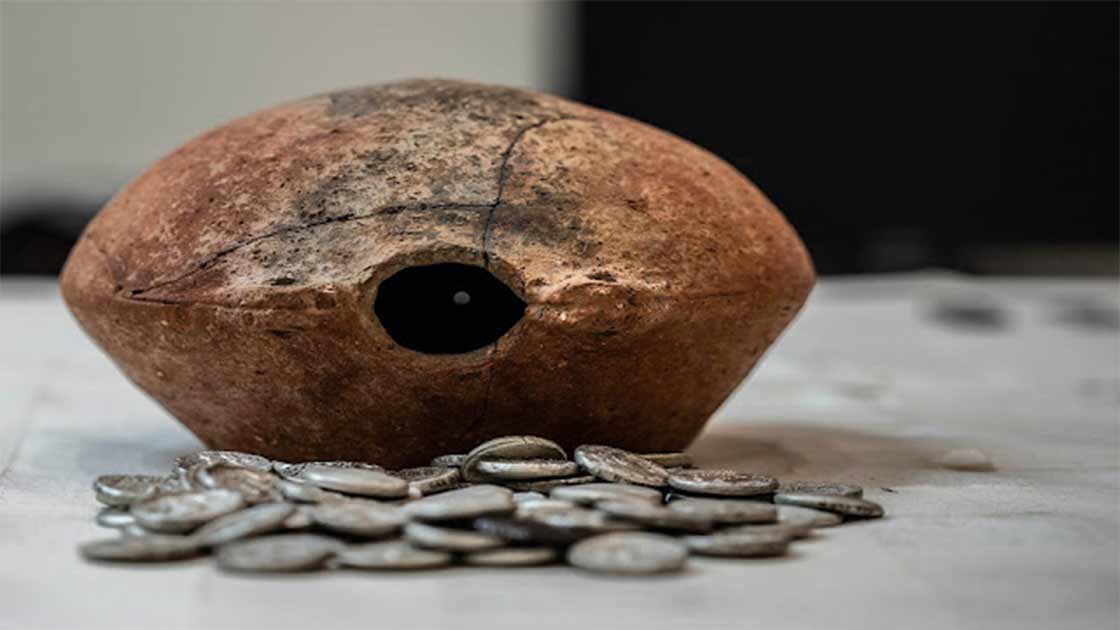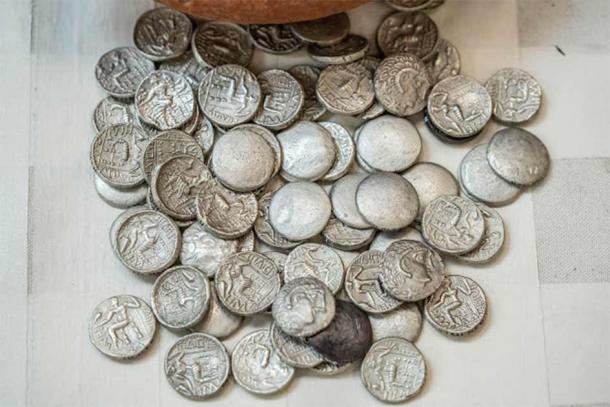- Feb 2, 2013
- 1,421
- 1,983
- Detector(s) used
- Many
- Primary Interest:
- All Treasure Hunting

[FONT="]UPDATED 24 AUGUST, 2021 - 18:38 ASHLEY COWIE
[h=1]UAE?s 2,300-year-old Mleiha Coin Hoard Reveals International Trade[/h]
It was a relatively normal ancient clay jar, until the team of United Arab Emirates (UAE) archaeologists weighed it. There was only one thing that could possibly have weighed 9 kilograms (19.8 pounds): metal treasure! The jar and its silver coin hoard, dated to 300 BC, were found in the ancient town of Mleiha in the Emirate of Sharjah, which is the third largest emirate in the UAE with land on both the Persian Gulf and the Gulf of Oman. Mleiha was an ancient center of trade and economics that influenced events across the Arabian Peninsula, and as far away as Persia and Mesopotamia.
Sharjah24 recently announced that researchers at the Sharjah Archaeology Authority discovered a 2,300-year-old jar filled with ancient silver coins. Minted and in circulation in Mleiha from approximately the 3rd century BC, this collection is extra special because many of these ancient coins were ?inspired by the coins of Alexander and his Seleucid successors.?

The many kinds of silver coins that made up the 409 Mleiha coin hoard recently discovered in the UAE. ( Sharjah Archaeology Authority )
[h=2]Ancient Mleiha And Its Connections To Iron Age Civilizations[/h]Dr. Sabah Aboud Jasim, Director-General of Sharjah Archaeology Authority, noted that the coin hoard was discovered by a local archaeological team in February 2021. The researchers happened upon a pottery jar which at first looked like every other clay vessel of its type, but this one weighed in at 9 kilograms (18.4 pounds), revealing it contained seriously heavy metal.
The coins were all classed as tetradrachm, an Ancient Greek silver coin type that was in wide circulation all over the Mediterranean from about 510 BC to 38 BC. Of the total 409 coins, 387 were single-sided mold coins, while 22 were double-sided mold coins.
- Hoard of 2,150-year-old silver coins found in Modiin, Israel
- Millions of silver coins may have been stored in Parthenon attic
To get a better perspective, let?s begin with an overview of ancient Mleiha, where the unique silver coin hoard was discovered.
https://www.ancient-origins.net/news-history-archaeology/mleiha-0015732
[/FONT]



